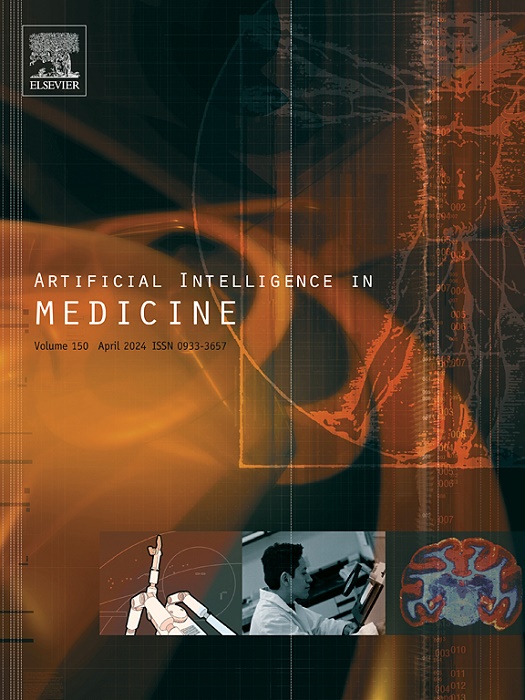HMEA:融合多方面信息的层次化医学知识图谱实体对齐模型
IF 6.2
2区 医学
Q1 COMPUTER SCIENCE, ARTIFICIAL INTELLIGENCE
引用次数: 0
摘要
医学实体对齐是医学知识集成和推理的关键,旨在匹配不同医学知识图中语义等效的实体。与一般知识图中的实体不同,医学实体包含丰富的多方面信息,不仅包括结构信息和属性信息,还包括本体和描述等附加信息。然而,现有的实体对齐方法忽略了这些附加信息,缺乏对多方面信息融合的探索。这导致医疗实体对齐的性能不太理想。针对上述问题,本文提出了一种整合多方面信息的层次化医学知识图谱实体对齐方法——HMEA。首先,将医学知识图表示为层次异构图,对医学实体的多方面信息进行建模;其次,根据多向信息的特点设计不同的表示学习方法,获得实体在不同维度上的向量表示;随后,我们设计了一个两阶段的多方面知识融合机制,动态整合多方面信息,实现相互补充。最后,我们利用融合的实体向量表示来指导实体对齐。我们将我们的方法与最先进的基线模型在十种不同类型的公开可用数据集上进行比较,并进一步进行消融和参数分析。实验结果验证了该模型的有效性和鲁棒性。在所有数据集的基准测试中,HMEA显著优于当前最先进的方法。本文章由计算机程序翻译,如有差异,请以英文原文为准。

HMEA: A hierarchical medical knowledge graph entity alignment model fusing multi-aspect information
Medical entity alignment is crucial for the integration and reasoning of medical knowledge, aiming to match semantically equivalent entities across different medical knowledge graphs. Unlike entities in general knowledge graphs, medical entities contain rich multi-aspect information, which not only includes structural and attribute information but also additional information such as ontology and descriptions. However, existing entity alignment methods overlook these additional pieces of information and lack exploration into the fusion of multi-aspect information. This leads to less-than-ideal performance in medical entity alignment. To address the aforementioned issues, in this paper, we propose a hierarchical medical knowledge graph entity alignment method, termed HMEA, which integrates multi-aspect information. Firstly, we represent the medical knowledge graph as a hierarchical heterogeneous graph to model the multi-aspect information of medical entities. Secondly, we design different representation learning methods according to the characteristics of multi-aspect information to obtain vector representations of entities in different dimensions. Subsequently, we devise a two-stage multi-aspect knowledge fusion mechanism to dynamically integrate multi-aspect information, enabling mutual complementarity. Finally, we utilize the fused entity vector representations to guide entity alignment. We compare our approach with state-of-the-art baseline models on ten different types of publicly available datasets and further conduct ablation and parameter analyses. Experimental results validate the effectiveness and robustness of the proposed model. In benchmark tests across all datasets, HMEA outperforms the current state-of-the-art methods significantly.
求助全文
通过发布文献求助,成功后即可免费获取论文全文。
去求助
来源期刊

Artificial Intelligence in Medicine
工程技术-工程:生物医学
CiteScore
15.00
自引率
2.70%
发文量
143
审稿时长
6.3 months
期刊介绍:
Artificial Intelligence in Medicine publishes original articles from a wide variety of interdisciplinary perspectives concerning the theory and practice of artificial intelligence (AI) in medicine, medically-oriented human biology, and health care.
Artificial intelligence in medicine may be characterized as the scientific discipline pertaining to research studies, projects, and applications that aim at supporting decision-based medical tasks through knowledge- and/or data-intensive computer-based solutions that ultimately support and improve the performance of a human care provider.
 求助内容:
求助内容: 应助结果提醒方式:
应助结果提醒方式:


